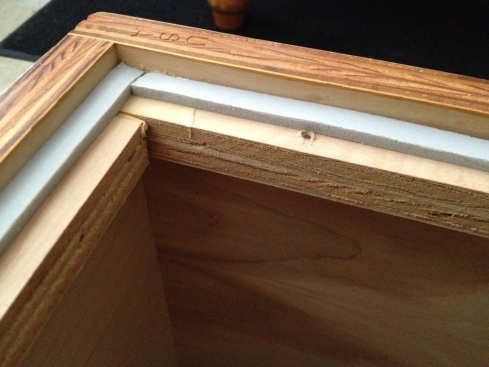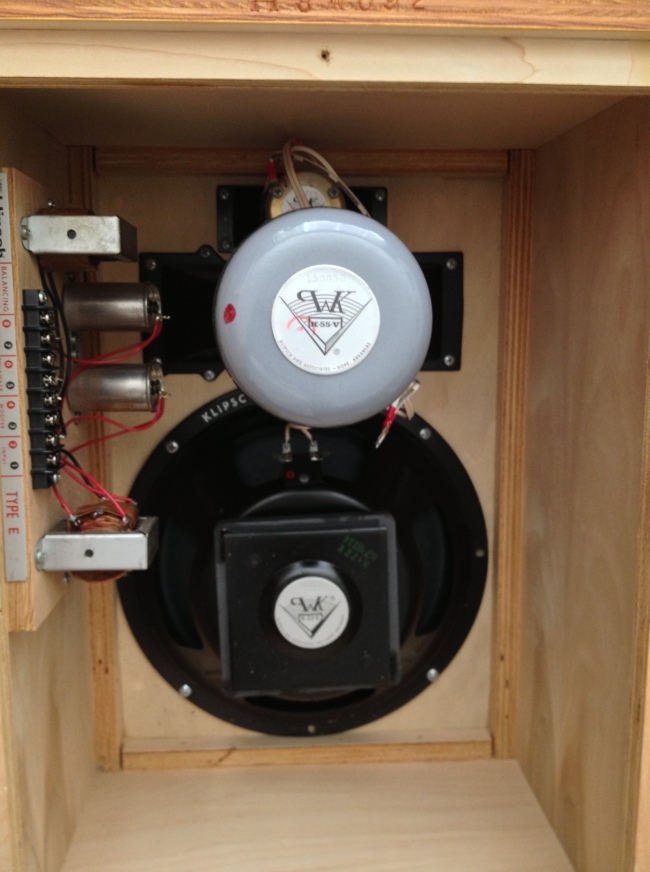I love pictures of microphones. I could browse the web for days just looking at and reading about various mics. There are so many different kinds with a variety of applications and sonic possibilities. In browsing the photo album on my phone, I realized I have gathered a decent collection of shots featuring collections of microphones I’ve used on assorted gigs. While I wish I had been more consistent in taking these photos and collected pictures from every show I’ve mixed, I would like to showcase a few in today’s post.
First up, the photo that started it all.

I started taking these pictures after a Springfield church chose the Gillioz Theatre to host their annual holiday variety show. When striking a stage, I always start by pulling all mics (and clips, if stored with) from their stands and putting them in one place so I can keep watch and get them back to their homes as quickly as possible to avoid the possibility of any microphones “walking off” in the rush of load-out. It was something about the sight of this chair-full of microphones that prompted me to whip out the camera-phone and snap a picture. My pile makes it a bit hard to see all the models, but I believe this night’s package, which as with all the following selections were selected by yours truly, featured the following:
- Audix D6 (kick)
- Audix D4 (floor tom)
- Shure KSM137 (drum overheads–the Gillioz is a very live room and I often would choose to not close mic toms)
- Shure SM57 (guitar cabs)
- Shure SM58 (vox)
- Shure Beta 58 (vox)
- Shure SLX2 wireless handheld with Beta 58 capsule (emcees)
This show was quite some time ago and, as most church bands do, featured a wide variety of instruments and players, so I don’t remember the exact input list.
Now let’s look at a photo from Delta Sol Revival playing First Friday Live at the Gillioz Theatre.
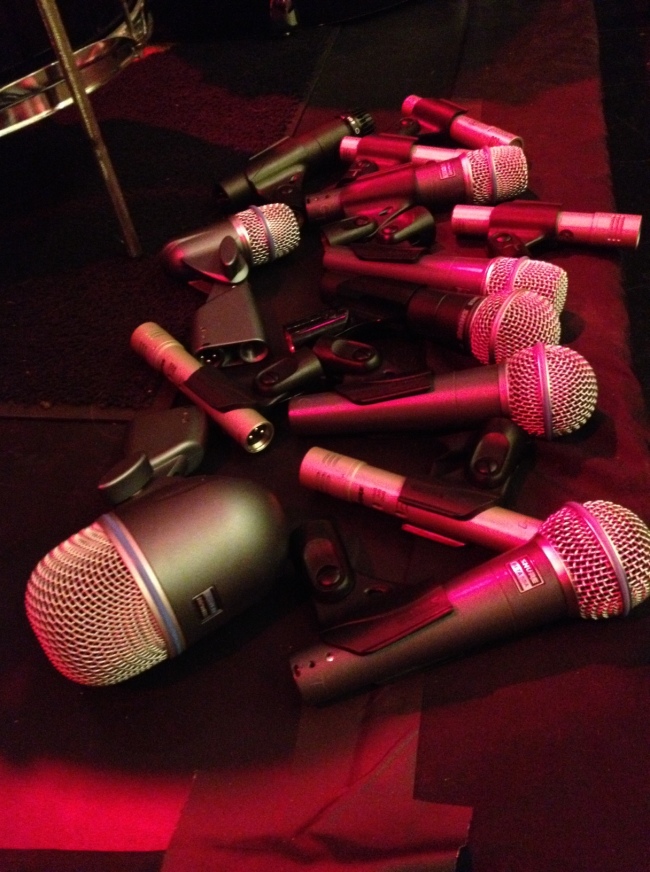
I’ll do my best to reconstruct the input list (audience mics added for recording purposes):
- Kick – Shure Beta 52A
- Snare – Shure SM57
- Overhead L – Shure KSM137
- Overhead R – Shure KSM137
- Aux Snare – Shure Beta 57A
- Aux Percussion – Shure KSM137
- Bass Direct – Radial JDI
- Bass Cab – Shure Beta 56A
- Keys L – Radial JDI
- Keys R – Radial JDI
- Guitar – Shure Beta 57A
- Sax – Shure Beta 58A
- Aux Vox – Shure SM58
- Lead Vox – Shure SM58
- Audience L – Shure KSM137
- Audience R – Shure KSM137
This package was comprised completely of the Gillioz Theatre’s house inventory, which is obviously all Shure.
Next up, mics used for J-None’s First Friday Live performance.
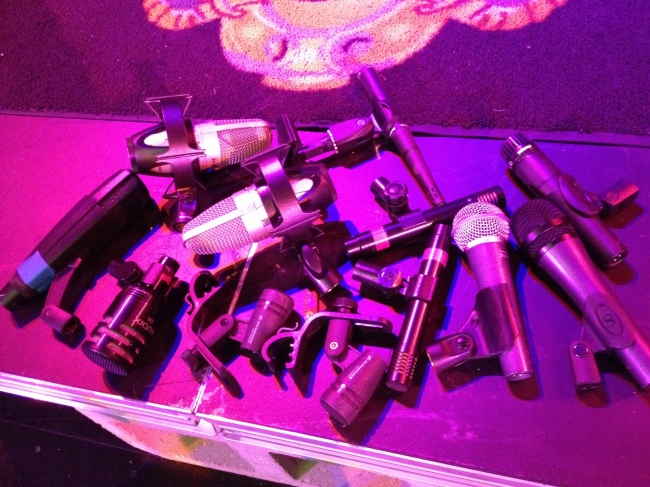
For this show I supplemented some of my own mics to compliment the theatre’s Shure package.
- Kick – Audix D6
- Snare- Shure SM57
- Hi-Hat – Earthworks SR20
- Rack Tom – Sennheiser e604
- Floor Tom – Sennheiser e604
- Overhead L – Shure KSM27
- Overhead R – Shure KSM27
- Guitar – Sennheiser MD421
- Tracks L – Radial JDI
- Tracks R – Radial JDI
- Aux Vox – Sennheiser e835
- Lead Vox – Shure Beta 58
- Audience L – Audix ADX51
- Audience R – Audix ADX51
You’ll notice I always use the Shure SM57 on snare. I just can’t argue with the results. The KSM27s worked okay on for overheads, but lacked a bit of the pattern control I prefer to create a wide stereo image.
The next feature is from one of my personal favorite Springfield, MO bands, The Bootheel.
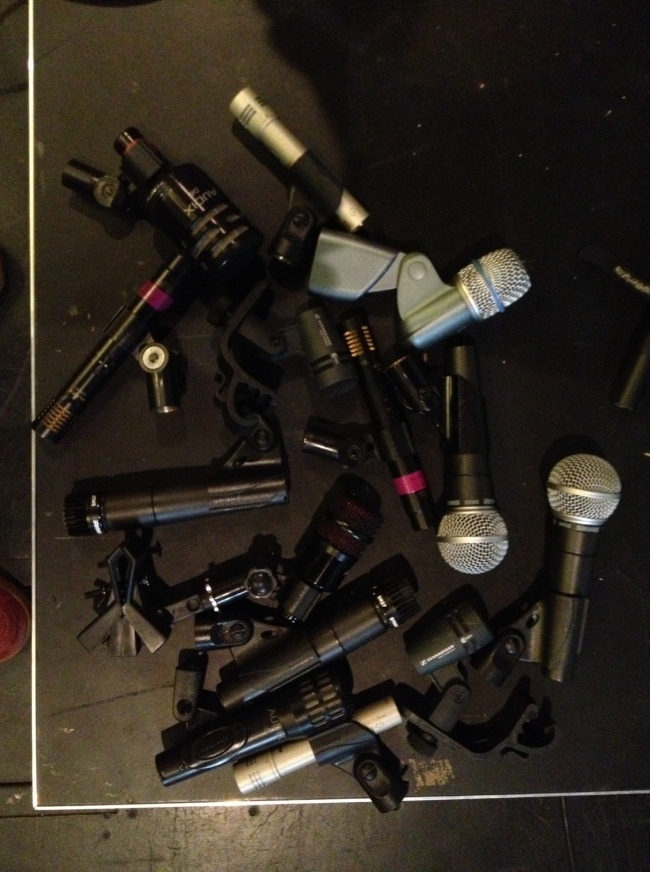
- Kick – Audix D6
- Snare – Shure SM57
- Rack – Sennheiser e604
- Floor – Sennheiser e604
- OHL – Audix ADX51
- OHR – Audix ADX51
- Bass Direct – Radial JDI
- Bass Cab – Audix D4
- Guitar SR – Audix i5
- Guitar SL – Shure SM57
- Drum Vox – Shure Beta 56A
- Aux Vox – Shure SM58
- Lead Vox – Shure SM58
- Audience L – Shure KSM137
- Audience R – Shure KSM137
This is when I fell in love the Audix D4 on bass cab. This was also my first time using the Beta 56A for drum vocals, which worked really well as Warren, drummer for the Bootheel, adds a lot to the music with his harmonies, but also hits incredibly hard, which can be difficult to work with in the mix. The Beta 56A provided good rejection of the drum kit and with a little HF rolloff on the console EQ, kept extra cymbal bleed to a minimum. If I could do this again, I’d move the Shure KSM137s to the kit, as I’m not sure I like the ADX51 for overhead use.
Moving right along, here is the package used for Someone Still Loves You Boris Yeltsin when they opened for Neon Trees at the Gillioz.

For this show, I opted to omit the overheads. As the opening act, SSLYBY was set downstage of the proscenium opening and main drape. I felt there was no need to reinforce the cymbals as I knew the room would take care of that and some bleed would inevitably make it into the vocal channels.
- Kick – Audix D6
- Snare – Shure SM57
- Rack – Sennheiser e604
- Floor – Sennheiser e604
- Bass Direct – DI in head
- Bass Cab – Audix D4
- SR Guitar – Heil PR40
- SL Guitar – Sennheiser MD421
- Vox 1 – Shure SM58
- Vox 2 – Shure SM58
- Drum Vox – EV N/D857B
This was a great mix–and only 11 channels! I’m a big fan of large-diaphragm dynamics on guitar cabs. The cab on which I used the Heil PR40 is one I had worked with before and was always challenged to keep it from sounding harsh. The PR40 tamed the tone nicely, requiring no console EQ other than a simple high-pass filter. The EV on drum vocals worked beautifully. SSLYBY likes to switch places on stage, moving from instrument to instrument between songs, and when one particular member sings behind the drum kit, it can be quite the challenge to get his vocals to stand out in the mix. He sings softly and plays hard. My dad gave my this N/D857B when I was about 12 years old, and it has been in my collection ever since (honestly, I’d say it started my collection). I had it with my that night and decided to give it a shot. The hyper-cardioid pattern rejected all the stuff I didn’t want and the mic’s response curve worked great for his vocals. My only complaint is that EV no longer makes it.
Here we have a photo from Kids & Chemicals playing First Friday Live.
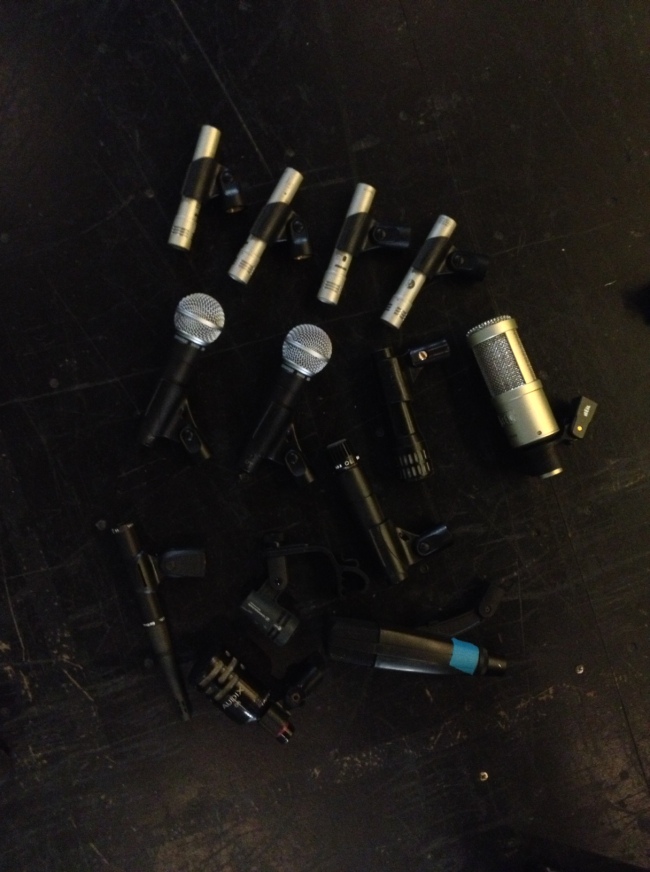
Kids & Chemicals is an electronic group backed with live drums. This freed up the resources to go a little crazy on the drum mics, which I am always happy to do.
- Kick In – Audix i5
- Kick Out – Audix D6
- Snare Top – Shure SM57
- Snare Bottom – Sennheiser e604
- Hats – Earthworks SR20
- Rack – Heil PR40
- Floor – Sennheiser MD421
- OHL – Shure KSM137
- OHR – Shure KSM137
- Tracks L – Radial JDI
- Tracks R – Radial JDI
- Vox w/ FX from stage – Shure SM58 > Focusrite Saffire 2i2 > Radial JDI
- Crowd Address – Shure SM58
- Audience L – Shure KSM137
- Audience R – Shure KSM137
I really liked using the Sennheiser e604 for snare bottom as it required no stand in an already crowded space. The Heil PR40 and Sennheiser MD421 on toms were great. Also, the Earthworks SR20 just feels right on hats–very fast and articulate.
Finally, a shot from the last band I mixed at the Gilly, Plaid Dragon.
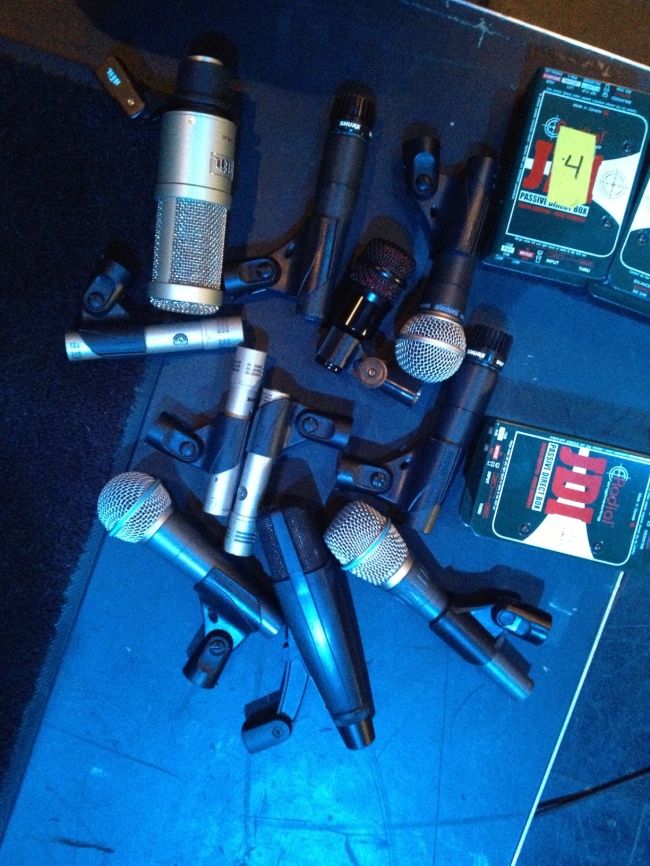
- Kick – Heil PR40
- Snare – Shure SM57
- OHL – Shure KSM137
- OHR – Shure KSM137
- Bass – Radial JDI
- SR Guitar – Sennheiser MD421
- Center Guitar – Audix D4
- SL Guitar – Shure SM57
- Acoustic Guitar – Radial JDI
- Ukulele – Radial JDI
- Synth – Radial ProDI
- Upright Bass – Radial JDI
- Violin – Shure KSM137
- Aux Vox – Shure SM58
- Drum Vox – Shure Beta 58A
- Lead Vox – Shure Beta 87A
The Beta 87A for lead vocals belongs to Inge, the lead singer, and sounds wonderful on her voice. The D4 helped add some meat to her small, single 10″ guitar amp. I had owned the PR40 for a while at this point, but had never tried it on kick, which all the studio rats rave about. As you can tell from previous input lists, I’m quite partial to the D6, but Plaid Dragon is a bit “unconventional” so I felt it was an appropriate time to get a little crazy myself. The results were excellent and I look forward to using the PR40 on kick again when appropriate.
Tags: ADX51, Audix, Beta 56A, Beta 57A, Beta 58A, Beta 87A, D4, D6, Delta Sol Revival, e604, e835, Earthworks, EV, First Friday Live, Gillioz Theatre, Gilly, input list, J-None, JDI, Kids & Chemicals, KSM137, KSM27, MD421, Microphones, mics, N/D857B, Plaid Dragon, Radial, Sennheiser, SGF, Shure, SM57, SM58, SR20, The Bootheel








